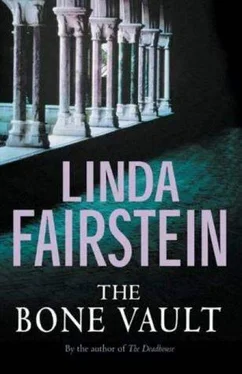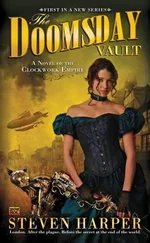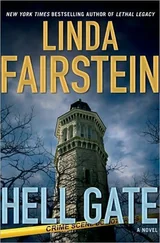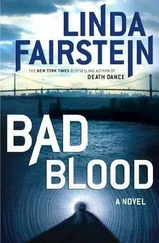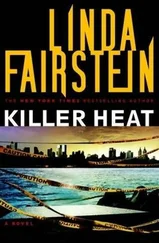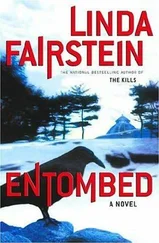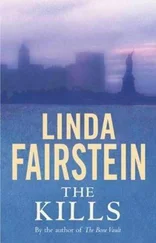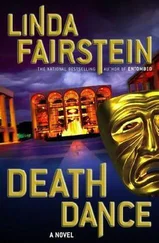“Where are the rest of them?”
Zimm shrugged his shoulders. “This is the only one that’s got a permanent resident. They move the others around as needed.”
We had walked through most of the department and had not seen any similar coffinlike vats. “They’re certainly not small enough to conceal.”
“People don’t hide them intentionally. There are endless numbers of small offices in which the research is done. Some are probably tucked away in corners of those rooms, and others are in storage areas. Believe me, Ms. Cooper, you’d need an army to go through this place from top to bottom to figure out everything that we’ve got in here. And Mr. Mamdouba isn’t about to let that happen.”
“Those other friends of Katrina’s you mentioned, can you take us to meet them?”
“I’m not really sure who’s in today.” He hesitated, and I thought he was afraid to make trouble for any other graduate students.
“We’re just trying to talk to people who might have known she was in distress. People whom she may have confided in about her return home to South Africa.”
“I wasn’t kidding about her friend, the one who left. I didn’t know her by name. Only by sight. I just know she was an anthropologist who was asked to resign and-”
“Fired?”
“Yeah. That’s why she’s in London now.”
“What do you have to do to get fired from a natural history museum?”
“Steal things would be the easiest. But that wasn’t her problem,” Zimm said. “Rumor was she crossed someone in administration.”
“Mamdouba?”
“No, but he’d certainly know the story.”
Mike looked at his notes. “And the African peoples connection?”
“They’re up on the second floor. I can take you up there. Maybe I’ll recognize her pals.”
We trekked again, up the stairs and out into the public space, past North American forests and through the Hall of Biodiversity, among the birds of the world, and into the African Peoples hall.
Zimm asked the guard if he knew where any of the interns were, but the man just shook his head.
My beeper began to vibrate as I stood before a photo exhibit of an early African expedition. “Cell phones work up here?”
“Not in the basement, and not in most interior areas like this. Better walk back to the birds.”
I checked Ryan Blackmer’s number and returned his call. “I’ve been trying to page you for half an hour. Black hole?”
“Yeah, sorry. These museum foundations are too thick in places. What’d I miss?”
“The meet with the Internet pedophile that we had set for three o’clock today? The perp canceled.”
“You think he smells something?”
“Nah. Wants to do it Monday. Sounds like he just couldn’t get into town early enough. I didn’t want you hanging around the museum for no reason. And Sarah said to tell you one other thing. We’re on the lookout for a chaperone from a company the Maury Povich show uses.”
“What for?”
“The producer brought in a bunch of wild-child types for a show called ‘Uncontrollable Teens.’ Would it surprise you to know that after the taping, a spunky fifteen-year-old from Hemp Hill, Texas, took off with the chaperone? Last seen giving him a blow job in the backseat of the stretch limo, parked right in front of the hotel where they were waiting to pick up her mother. Wire services have it.”
“How’d they get it?”
“Mother gave it out. She’s looking to sue the show.”
“Where the hell was she while the kid was on the loose?”
“Back in the hotel room with a guy she picked up at a bar the night before. Must be a genetic thing.”
“We’re almost done here. If I don’t have to wait for your sting to go down, we’ve got another witness to interview,” I said, thinking of Ruth Gerst, the Met trustee.
Our eager guide took us through many of the back corridors and unpeopled areas of the museum before we left: hallway after darkened hallway filled with cases of forgotten bird displays, rows of unmarked lockers, and blocks of empty containers covered over with thick layers of plastic tarp. By the time he walked us out the door, it was close to three o’clock.
Zimm had known nothing about arsenic sources within the museum, since his department did not use any in their work, but he was now alert to endless ideas about how to dispose of a body within the vast network of buildings.
On our way east to the Gerst apartment on Park Avenue, Mike and I stopped for a sandwich and cold drink. He called the ME’s office and left a message on Dr. Kestenbaum’s voice mail. If there was anything on Katrina’s body or clothing that indicated a need for DNA analysis, the profiles of the Natural History staff were on record. He also suggested testing the linen cloths in which the body had been wrapped for some natural oil substance that might have been used in an attempt to suppress odors.
The doorman admitted us to one of the toniest buildings on Park Avenue, just north of Seventieth Street. Mrs. Gerst answered the door herself. “Come in, darlings. Ruth Gerst. You’re Miss Cooper and Mr. Chapman. Come right in.”
She looked as though she had just returned from an elegant luncheon. She was a large woman whom I guessed to be in her eighties, dressed in a light tweed walking suit, perfectly coiffed, and wearing enough jewelry to sink a rowboat.
She ushered us into a sitting room off the main living area. The furniture was covered in a luxe silk fabric, and the walls were hung with an assortment of small paintings, each undoubtedly as valuable as the emerald-cut diamond ring that tried to balance itself atop Gerst’s gnarled finger.
“You’re Jake Tyler’s girl, is that right?”
I answered her politely, while Mike stifled a laugh. “Yes, ma’am. Alexandra Cooper.”
“I hope I didn’t smother him the other night, at the Met, with all my attention and questions. You shouldn’t let a good-looking fellow out around town by himself.”
“What am I, chopped liver? You available, Mrs. Gerst?”
“That’s the spirit, son. I’ve been available for way too long. Eighty-six, I am now. Think you can handle me? Been a widow almost thirty years. But let me get right to the point. I’ve been involved with the Metropolitan Museum for an awfully long time. Seen directors come and go. Scandals, too. I read about this young lady’s death and I’ve been terribly concerned.”
Ruth Gerst pushed herself up off her armchair and walked to a small wet bar in an alcove against the far corner of the room. “Can I fix you a drink?”
We both said no, and watched as she poured herself a neat shot of bourbon.
“You have something you want to tell us about Pierre Thibodaux?”
“Goodness, no. I see the newspapers could hardly wait a minute before they started damning him about the girl’s murder. You need to know something about the politics of the place, and who’s out to get him. I thought I could help.”
“Have you been affiliated with the Met for a very long time?”
“My dear, my father was a trustee. In 1925, he gave his first million. Old banking family. His father came to this country in the 1880s. You can’t begin to imagine how this whole business has changed over time. Gaylord and Bellinger, pointing fingers at Pierre? Curators used to know their place in the old days.”
I knew Bellinger was not a fan of the director’s but I wasn’t aware of any public finger-pointing, yet. “Really?”
Mrs. Gerst picked up on her own story. “In my father’s day? The curators at the Met weren’t even allowed to sit when they made a presentation before the trustees of the purchasing committee. They came into the meeting, described their research on a piece, and they left. As it should be. Each of the trustees’ wives was expected to donate evening gowns from her own wardrobe, after the season, to the wives of the curators so they could make a respectable appearance at museum events.
Читать дальше
